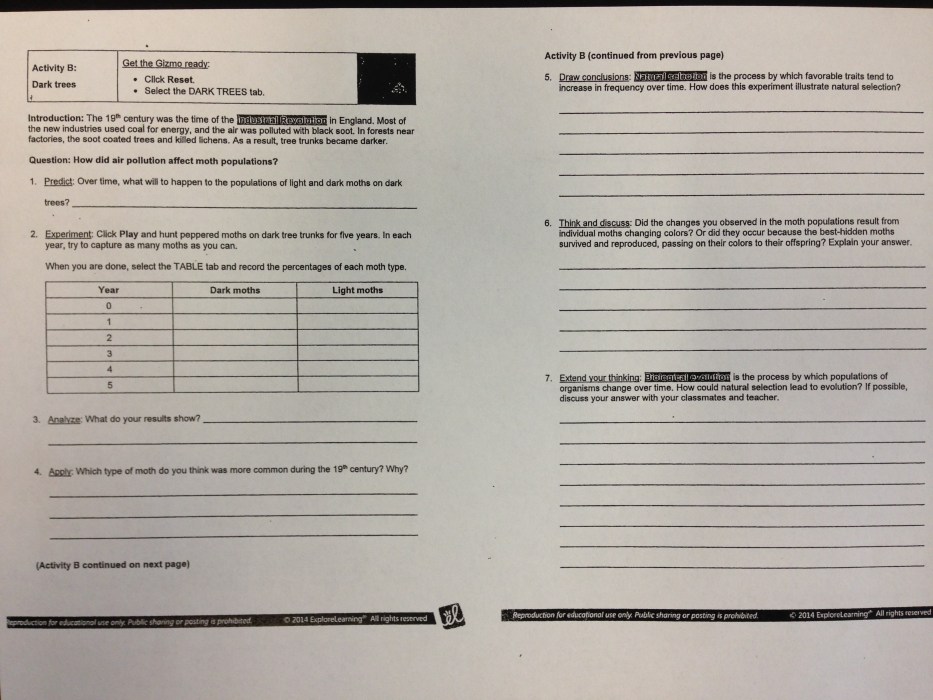The Natural and Artificial Selection Gizmo Answer Key provides a comprehensive resource for understanding the fundamental concepts of natural and artificial selection. This interactive simulation allows students to explore the mechanisms of evolution and the impact of environmental factors on the survival and adaptation of species.
The Gizmo simulation demonstrates the principles of natural selection by simulating the evolution of a population of rabbits in a changing environment. Students can manipulate variables such as population size, mutation rate, and environmental conditions to observe how these factors influence the survival and reproductive success of different rabbit traits.
The simulation also allows students to explore the concept of artificial selection, where humans intentionally select for desired traits in a population.
Natural and Artificial Selection

Natural and artificial selection are two fundamental processes that drive evolution. Natural selection is the process by which organisms with traits that are better suited to their environment are more likely to survive and reproduce, passing on their advantageous traits to their offspring.
Artificial selection, on the other hand, is the process by which humans select and breed organisms with desired traits, such as increased milk production in cows or enhanced speed in racehorses.
Gizmo Simulation: Natural And Artificial Selection Gizmo Answer Key

The “Natural and Artificial Selection Gizmo” simulation is a computer-based tool that allows users to explore the principles of natural and artificial selection in a controlled environment. The simulation creates a virtual population of organisms and allows users to manipulate various environmental factors, such as food availability, predation, and disease, to observe how these factors affect the survival and reproduction of different organisms.
Key Features of the Simulation
- Population size: The simulation allows users to control the size of the population, which can affect the rate of evolution.
- Environment: The simulation can be customized to simulate different environmental conditions, such as the availability of food, predators, and diseases.
- Selection pressures: Users can apply different selection pressures to the population, such as favoring organisms with certain traits or removing organisms with undesirable traits.
Data Analysis and Interpretation, Natural and artificial selection gizmo answer key
The simulation generates data on the survival and reproduction of different organisms over time. This data can be analyzed to identify the traits that are favored by natural or artificial selection. The simulation also allows users to track the genetic diversity of the population over time.
Applications of the Simulation
The “Natural and Artificial Selection Gizmo” simulation can be used for a variety of educational and research purposes. It can be used to teach students about the principles of natural and artificial selection, and it can also be used to investigate the effects of different environmental factors on the evolution of a population.
FAQ Guide
What is the purpose of the Natural and Artificial Selection Gizmo simulation?
The Natural and Artificial Selection Gizmo simulation is designed to demonstrate the principles of natural and artificial selection and their impact on the evolution of a population.
How can the Gizmo simulation be used to explore different scenarios and hypotheses?
The Gizmo simulation allows users to manipulate variables such as population size, mutation rate, and environmental conditions to observe how these factors influence the survival and reproductive success of different traits in a population.
What are the limitations of the Gizmo simulation?
The Gizmo simulation is a simplified representation of natural and artificial selection and may not fully capture the complexity of real-world evolutionary processes.